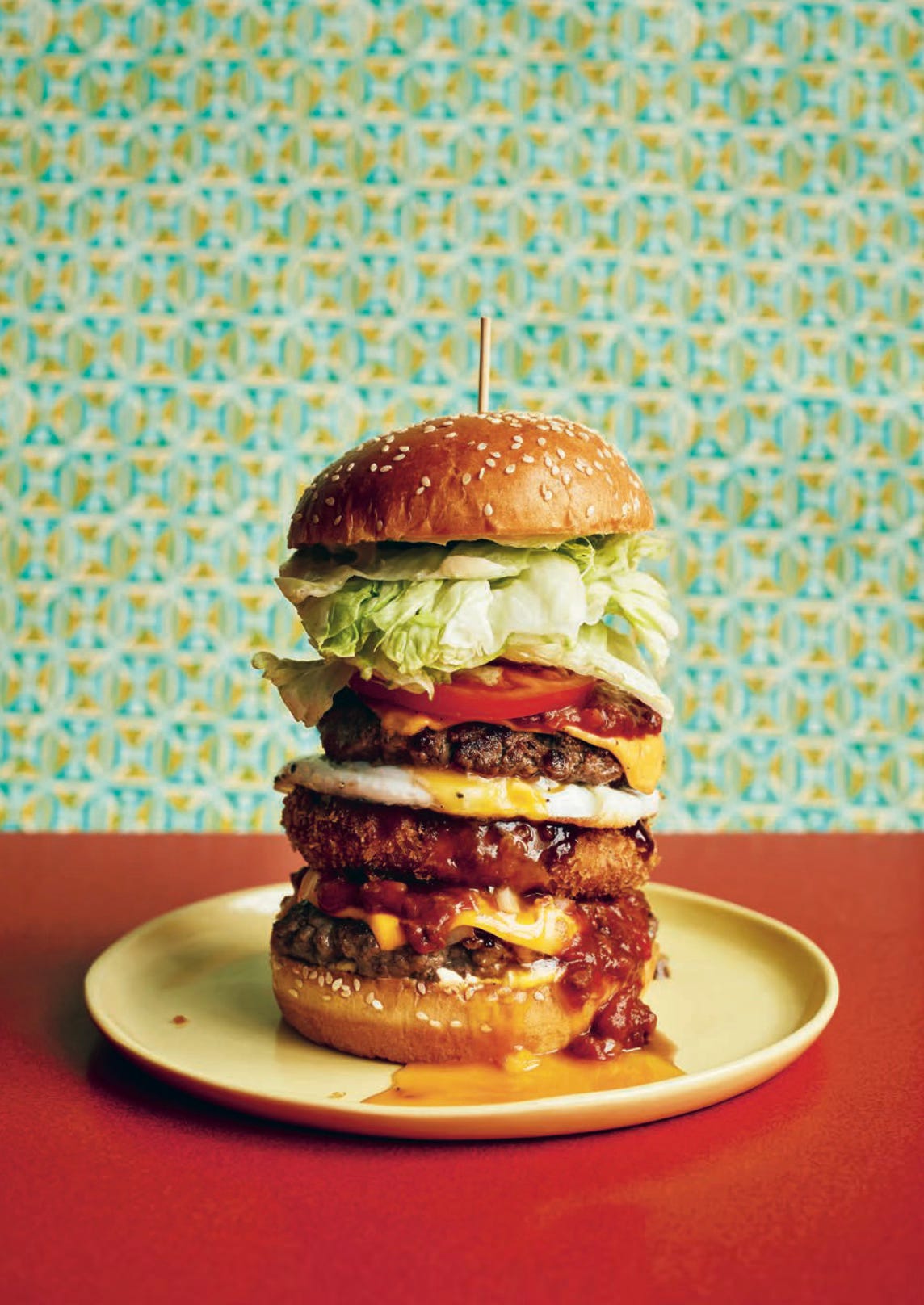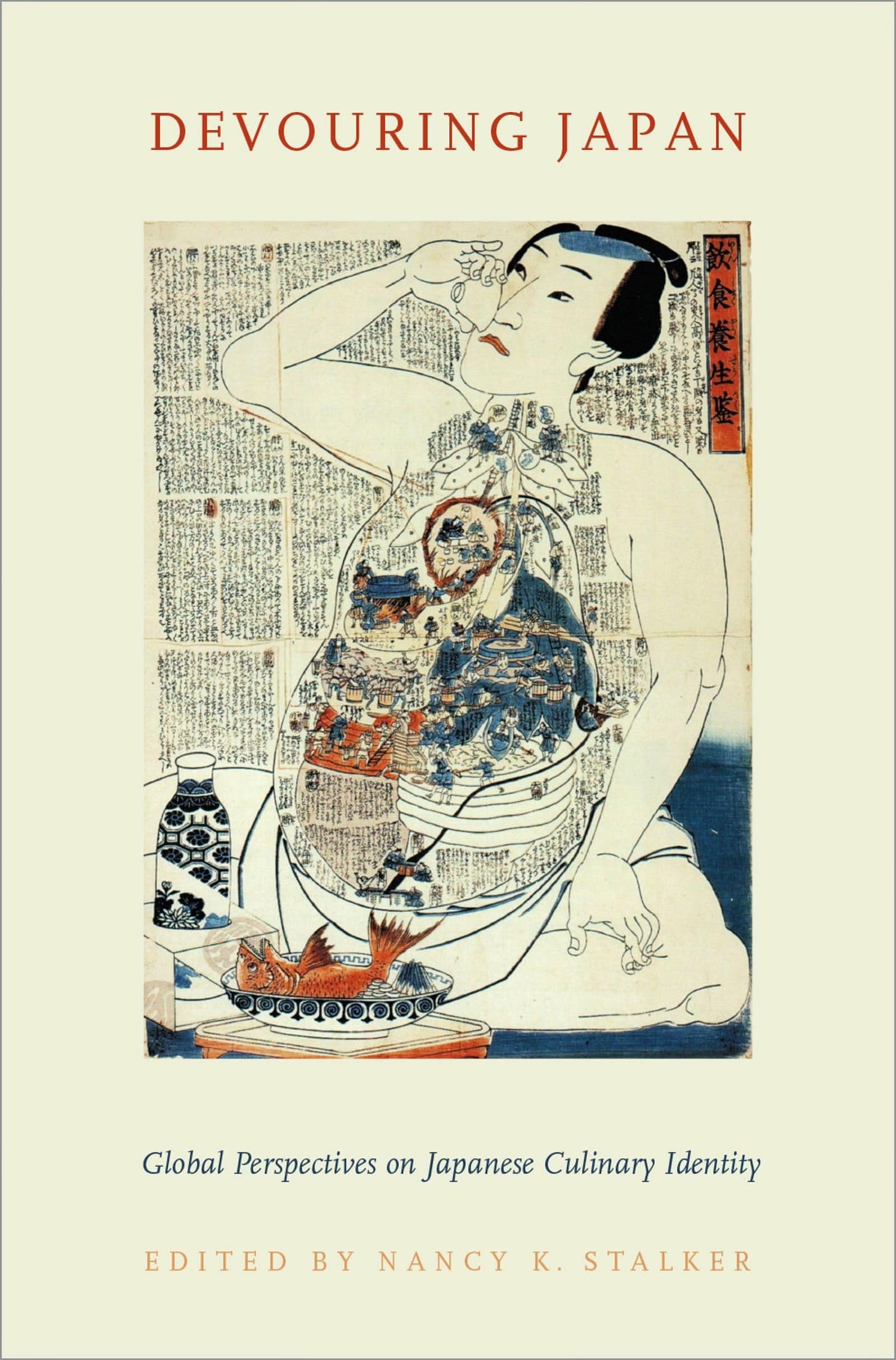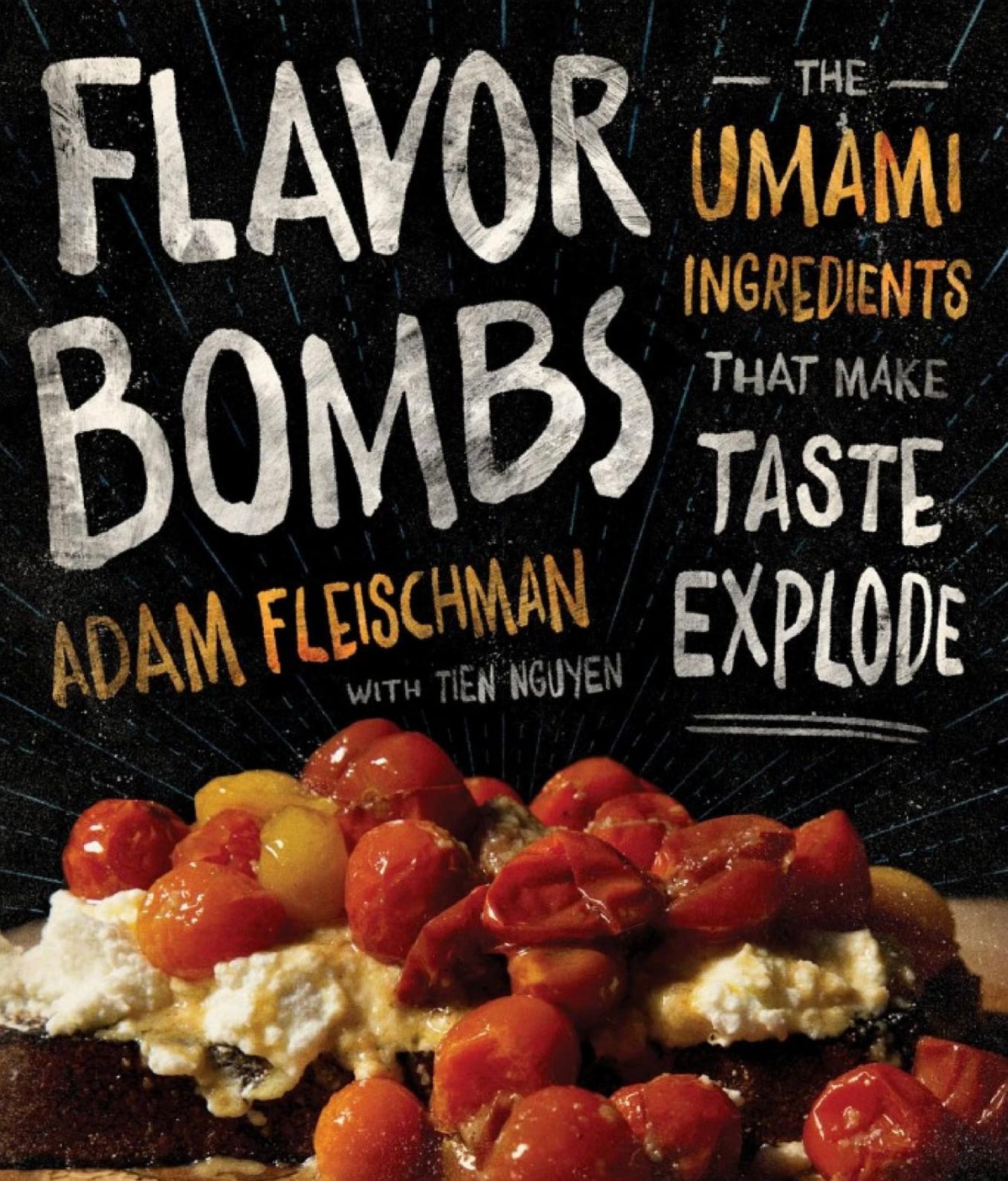
I recently had the privilege to appear as a talking head on Dr. Anna Sulan Masing and Lucy Dearlove’s podcast series “To Be Delicious: A Cultural Context of MSG in the UK.” Across five episodes, Masing and Dearlove examine MSG and umami from multiple angles, investigating how they can be understood through both science and culture, and how it connects to larger concepts like nostalgia, racism, language, and a sense of place. The podcast clearly differentiates between MSG and umami (it bears repeating: they are not the same thing), while also explaining their inseparability and universality. MSG and umami feature in all cuisines. Literally all of them. But their specific forms, the way they are used, and the way they are understood all vary widely from culture to culture.
I went back through my old blog posts and college essays (embarrassing) to see if I could pinpoint when I first learned about umami.1 In November 2004 I wrote a paper called “Adaptation of the Chinese Noodle in Pre-Modern Japan” that explains umami and key umami ingredients, such as katsuobushi and soy sauce.2 By December 2006, I was mentioning umami casually in recipes for chowder on my blog. Back then, umami was novel to me, but also relatively unremarkable. It wasn’t the gastronomic buzzword or international phenomenon it is now. I remember noticing it on a lot of Japanese food packaging in banal contexts: as an ingredient (うま味調味料 umami chōmiryō (umami seasoning)), or in marketing copy and descriptors, such as this “rich taste” (深い旨み fukai umami, literally “deep umami”) nattō sold by Lawson.
In both instances, you could translate umami as “savory,” and it would make sense, and adequately describe the flavor or ingredient in question. But! Note that “umami” is written differently in each instance: うま味 for the umami seasoning, and 旨み for the “rich taste” nattō. This is a difference I only recently came to understand. The former refers specifically to umami the basic taste – you can think of “umami chōmiryō” as analogous to the word “sweetener” on English food labels (though of course that applies to sweet compounds rather than umami ones). The latter is more vague – just like the other umami, it derives from “umai,” which means “tasty,” but in this sense it implies a satisfying, balanced flavor. The Umami Information Center’s Japanese site has an explainer about this, which doesn’t appear on their English site. They take for granted that in English, umami is understood only as savoriness.
Except… it kind of isn’t! There’s still a lot of confusion about what exactly umami is, and some of this confusion comes from how umami as a concept is communicated by the Japanese outwardly, to a global audience. On the podcast, I said that my understanding of umami is really “umami in translation.” But it might be more accurate to say that my understanding of umami is actually limited to the relatively straightforward English definition of umami, which avoids the Japanese issue of homophonic ambiguity. Even so, some of the fuzziness derived from that ambiguity persists in English; the secondary Japanese definition of umami as “deliciousness” isn’t so much lost in translation as warped in translation.3
Back in 2015, The New Yorker published an article by Hannah Goldfield provocatively titled “You Think You Know Umami.” At the time, I felt it badly misrepresented what umami is, while also overcomplicating it, leaning hard into stereotypical characterizations of Japanese cuisine (and Japanese culture generally) as mysterious and inscrutable. (It’s annoyingly common for people writing about Japan to take the position that if they don’t know something, then it must be unknowable.)
The article made me so angry that I ranted about it on my blog, and later adapted that rant into an explainer of umami in Vegan JapanEasy. Here’s one particular snippet from the article that triggered me:
When I asked him to describe what umami tastes like, he grew philosophical. “It’s something that’s kind to the body,” he said. “It’s mild, and, after eating, it’s not heavy on your stomach. It helps you wake up better in the morning. That’s what deliciousness is about. It’s about feeling good after eating.” The most balanced meals, he said, have the same level of saltiness as exists naturally in our bodies, and umami in other countries can be too heavy on the stomach. “In Japan, we talk about it tasting good, sleeping well, and clean bowel movements.”
These statements were made by Kazu Katō, a representative of JRO, the Organization to Promote Japanese Restaurants Abroad. Though JRO’s stated purpose is to promote restaurants, what they really promote are Japanese exports, via the businesses that sell them. They operate mainly at expos and trade events, but also run occasional public campaigns like last year’s Japanese curry stamp rally in London. Umami itself is one of their most prominent marketing assets. But JRO was initially conceived as an organization that would not only promote Japanese food, but also regulate and certify it. Ted Bestor explains the background in an article in Devouring Japan:
In the mid-2000s, Minister of Agriculture, Forestry and Fisheries Matsuoka Toshikatsu complained about “inauthentic” Japanese restaurants after visiting a Colorado emporium that featured both sushi and Korean barbecue on its menu. In response, he advocated a system of certification to be applied to restaurants outside of Japan that represent themselves as serving genuine Japanese cuisine.
The proposal was ridiculed in the Japanese press, as well as in government circles; the project came to naught. Nonetheless, the notion of “sushi police” was picked up by the Japanese media and has remained in popular consciousness, perhaps as a shorthand for referring to officious gatekeeping of what is and what isn’t actually Japanese cuisine. Indicative of such popular derision is a 2016 Japanese television anime series entitled Sushi Police… [which] portrays bumbling Japanese officials, accompanied by a robot powered by soy sauce, pursuing inauthentic sushi in the United States… and elsewhere.4
Although Matsuoka’s specific proposal never materialized, it morphed into JRO, which tacitly certified restaurants by including them in campaigns, or by endorsing them in designated restaurant guides. Furthermore, the MAFF scheme turned out to be a hydra: its head may have been cut off, but two more grew in its place: JETRO’s “Japanese Food Supporter” designation, and the completely opaque Nintei Nihon Restaurant accreditation program (apparently initiated by a Japanese restaurant owner in London, with no connection to any other governing body).
This is all to say that umami has been used by Japanese government ministries and trade organizations like JRO as a political and economic tool to support a narrow, generally conservative image of Japanese food, and Katō’s comments should be understood in that context. Elsewhere in Devouring Japan, Yoshimi Osawa investigates the idea of umami as Japanese cultural property in her article “We Can Taste but Others Cannot”:
[Some] Japanese now commonly assert that umami is a taste recognized only by Japanese or that the Japanese understand umami better than foreigners… There are at least three technical reasons why these claims exist: (1) all three umami substances (MSG, IMP, and GMP) were discovered by Japanese scientists, (2) Japanese is one of only a few languages to have a word to describe the umami type of taste, and (3) the existence of umami as a fifth taste was not believed outside of Japan until the discovery of the umami receptor in 2000.5
Osawa’s research included interviews with a number of Japanese chefs in both Japan and the UK, some of whom were absolutely damning in their appraisal of non-Japanese palates as inferior and unable to perceive or understand umami.6 And is it any wonder, when official explanations of umami, such as Katō’s, can be so esoteric and abstract that they invoke sleep quality and bowel movements? Mythologizing umami like this creates a feedback loop between Japan and the West that supports an Orientalist/exceptionalist view of Japan while making umami out to be something more difficult to grasp than it actually is.
The New Yorker article also features commentary from Adam Fleischman,7 founder of the now mostly-defunct Umami Burger. The whole idea of an “umami burger” is irksome to me, because burgers are already inherently umami, especially if they contain accoutrements that bring their own umami compounds to the party: common toppings such as cheese, tomatoes, ketchup, or pickles. Even at their most basic, burgers express an extraordinary level of umami intelligence. That’s why most of the world’s best burgers are not that different from ones that would have been made one hundred years ago. Adding high-concept condiments such as Fleischman’s “Umami Master Sauce” or “Umami Dust” is… fine, I guess, and probably quite tasty. But it’s also unnecessary. I get the impression that in the case of Umami Burger, umami was deployed primarily to generate marketing buzz, and only secondarily in the service of making a better burger.
The Japanese, [Fleischman] told me, define umami as “an over-all harmonious state of perfection where the ingredients come together, a really rounded and harmonious dish. They have a sort of zen way of looking at it.”
The invocation of Zen says it all: umami is meant to be something mystical, rarefied, profound. But one of Osawa’s interviewees, a Japanese food TV presenter, offers a counterpoint: “To be honest, umami is a convenient expression. If I cannot find an appropriate expression to describe the taste of food, I sometimes use umami instead of just saying oishii (tasty).”8
Imagine, if you will, a parallel universe in which the chemical compounds responsible for the subtle but distinctive taste of savory food were isolated by an Italian scientist, who named this taste “gustosità” or something. I wonder what the discourse surrounding gustosità would look like. Would the Italian government use it to promote anchovies and cheese and tinned tomatoes, and to support the idea that Italians have superior palates? (Lol I can’t even keep a straight face writing that – of course they would.) Would non-Italians be producing podcasts and writing lengthy think pieces about it, like this one?
Or would we all just shrug and say, “Oh yeah, gustosità – I get it, savoriness. American food is savory, too. Burgers are totes savory.”
Clearly, I am very dismissive of the notion that umami is anything more than just a universal basic taste – too dismissive, in fact. Masing and Dearlove’s podcast – which compellingly connects umami to feelings of comfort, satisfaction, nostalgia, and self-care – has made me rethink my hardline, just-the-facts position on umami. Because taste is not just a matter of, you know, taste. How we perceive food and understand our relationship to it, and its relationship to the wider world, has a lot to do with how we contextualize it and talk about it.
Katō’s musings about how umami is “kind to the body” and helps you poop sound pretty woo-woo, but a more open-minded and perhaps less arrogant interpretation would be that he’s expressing an aesthetic sensibility related to umami, rather than trying to define the term in a purely academic way. And certainly, that approach has merit, especially because when it comes to describing sensations, words often fail us miserably.

In a way, it’s no wonder we’ve all latched on to umami so excitedly. We don’t have a lot of words to describe tastes, so when a new one comes along, it’s like finding a key to a door that’s been locked our whole life. Now we can name it; now we can talk about it, explain it, move in and make it our own.
Discussing the sensory characteristics of food often involves metaphors. We describe tastes in terms of other things, and vice versa: a bittersweet memory, a sour expression, salty language. But savory…? That’s a bit trickier. We can savor a moment, or meet an unsavory character, but the actual word “savory” doesn’t appear in any English figures of speech that I can think of. Perhaps this indicates that we don’t have strong, definitive associations with the word. It may be worth noting, as Osawa does, that Japanese dictionaries also define umami as “a skillful thing to relish, especially techniques in art” and “profit that is easily gained in business.”9 As a more familiar, more lived-in word (and again, a homophone), umami naturally has other connotations in Japanese.
How on earth would you describe a savory taste to someone else? How would you describe any taste? It’s actually kind of impossible, which is why using metaphors, using narratives, and expanding on the emotions we associate with a taste can be useful – as Masing and Dearlove and their interview subjects have done, and indeed, as Katō does in his explanations. The language Katō uses to explain umami is delicate and calm: “kind,” “mild,” “feeling good,” “sleeping well.” They’re the same sort of words you might hear in a meditation app. Now, compare this to Adam Fleischman’s cookbook:
To quote Clive Badger from Fantastic Mr. Fox: Explosions! Flames! Burning things! The back cover copy boasts that this book will teach you how to “detonate flavor”! Kaboom! Could this take on umami be more American?10 Of course it’s to be expected that in a country where there are more guns than people, even umami is weaponized. Goldfield points out that “Fleischman’s approach — Where do I find the umami, and how can I get as much as possible? — is distinctly American.” She also reports that in 2013 David Chang set out to create something he called “the New York umami.” What does this even mean? If you want New York umami, eat a slice of pizza. If you want American umami, just eat any normal cheeseburger. In his cookbook, Fleischman acknowledges the inherent umami of pizza and burgers – but it’s not enough for him. And maybe that’s the American approach to umami, as Goldfield suggests: to ramp up, maximize, exaggerate, explode.
Umami is a basic taste – and I still think that’s the best and simplest way to understand it. But perhaps basic tastes just aren’t so basic after all. Sweet, sour, bitter, salty, and umami: we associate all of them with particular things outside the realm of food, and it is in those associations that they take on new, more complex meanings, which will inevitably vary between different cultures and languages. Tastes are like colors: we all see the same red, blue, and green, but how we interpret them as symbols depends completely on our cultural vantage point. We are what we eat – that’s a given. But we are also the way we talk about what we eat.
Thanks for reading! If you enjoyed this post, you may like some of the articles I’ve written for Pellicle, which also explore how symbolism and sense-memories connect to taste and flavor.
“The Fast and the Curious – Discovering the Wider World of Citrus”
“Kōji, Culture, and Community – Part 1 (Miso and Collective Memory), Part 2 (Sake, Storytelling, and Japanese Aesthetics), and Part 3 (Soy Sauce, Enzymes, and Transnationalism)”
I remember my MSG “aha!” moment clearly. When I was living in Japan, at some point I clocked that the salt shaker on the table at my go-to yakitori joint wasn’t just salt. It was aji-shio, or “flavor salt,” a mixture of salt and MSG. So that’s why it makes everything taste so good, I thought. This came after growing up in America and seeing “no MSG” labels on food packaging for years and years, and hearing about MSG primarily in the context of widespread, casually racist demonization of Chinese food. I never really knew why people thought MSG was bad, and it didn’t take much Googling for me to realize that it wasn’t.I’ve been all in for Team MSG ever since.
The paper also refers to synergistic umami, although only in a misspelled citation that took me a while to figure out: “sojo-kaka,” which should have been “sōjō kōka” (相乗効果). To be honest, re-reading this paper made me feel like I’ve been spinning my wheels for 20 years when it comes to communicating about umami!
This is a pretty common occurrence in popular writing about Japanese culture. So many Japanese words have undergone a similar treatment, like ikigai – I really enjoyed this article explaining how it’s been misrepresented in the West. And it’s worth pointing out that we already have cultural concepts analogous to ikigai: raison d’être, or simply one’s life purpose – just like we already have the concept of savoriness. Do we even need “umami”?
Bestor, Theodore. “Washoku, Far and Near: UNESCO, Gastrodiplomacy, and the Cultural Politics of Traditional Japanese Cuisine.” Devouring Japan, edited by Nancy K. Stalker, 109-110. Oxford University Press, 2018.
Osawa, Yoshimi. “We Can Taste but Others Cannot: Umami as an Exclusively Japanese Concept.” Devouring Japan, edited by Nancy K. Stalker, 127. Oxford University Press, 2018.
Osawa 126.
“Butcher” in German; literally “meat man.” Is that nominative determinism or what?
Osawa 121.
Osawa 121.
Out of curiosity, I Googled うま味爆弾 umami bakudan (umami bomb in Japanese), and there are actually quite a lot of results. (The first and most interesting one is for 3D-printed canapés!). So maybe this idea of a violent, explosive umami isn’t so all-American or un-Japanese after all.







Fantastic read, really really enjoyed! And I agree with you about the idea of an umami burger -- it's like saying "burger burger", since burgers are naturally umami / savoury.
This was really interesting, thank you! Especially love sushi police.